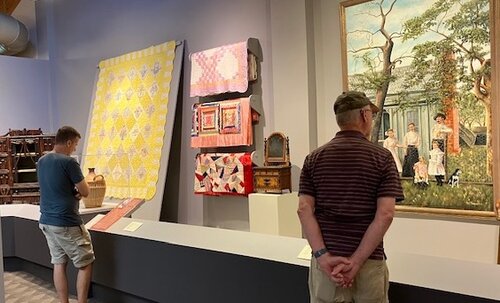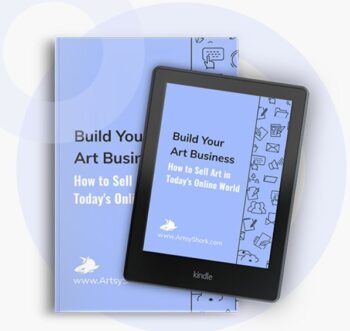by Carolyn Edlund
Instead of lowering prices, build the perceived value of your art.

Many artists today are feeling the pressure of a difficult economy. Sales can slow, and the temptation is strong to run discounts or lower prices just to keep work moving. But price-cutting comes at a cost. It can damage your reputation, attract bargain hunters instead of collectors, and diminish the long-term value of your art.
Instead of reducing prices, it’s far more effective to focus on building value. Collectors are drawn not only to the artwork itself but also to the story, professionalism, and experience you create around it. By strengthening both the tangible and perceived value of your work, you can compete successfully, without undercutting yourself.
The Problem with Discounting
Competing on price often has damaging consequences. Frequent discounts can undermine your credibility, leaving collectors wondering whether your work is truly worth the original price. Those who bought at full value may feel frustrated or devalued if they see steep reductions later on. Bargain hunters who are attracted by lower prices are rarely the loyal, long-term collectors you want to cultivate. Once a brand is associated with price-cutting, it’s difficult to restore trust or raise prices again without backlash.
True value in art goes beyond the cost of materials and labor. It rests on two dimensions: the tangible and the perceived. Tangible value includes the visible elements such as quality craftsmanship, thoughtful finishing, and the uniqueness of the piece. Perceived value, on the other hand, is built from reputation, storytelling, and the emotional connection buyers feel with the art and the artist. Together, these elements are what persuade someone not just to appreciate your work, but to invest in it.
Increase Perceived Value
One of the most effective ways to build value is through craftsmanship and presentation. Professional finishing, from the frame to the edges of a canvas, signals to collectors that the work is ready to display. Accompanying pieces with certificates of authenticity or signed documentation reinforces trust and underscores professionalism. Alongside craftsmanship, storytelling plays a crucial role.
Sharing the inspiration behind your work, your creative process, or the meaning behind a piece draws collectors into a personal connection. Whether through blog posts, social media updates, or in-studio conversations, weaving your story into the art itself adds depth and resonance.
Branding and positioning also matter greatly. Maintaining a consistent artistic voice across your portfolio creates recognition, while participation in respected galleries, juried exhibitions, or reputable publications adds legitimacy. A polished CV enhances this impression, as does a strong exhibition history. When your résumé highlights shows, awards, press coverage, and collections where your work has been acquired, it demonstrates progress and credibility. Placement in both private and public collections carries weight because it proves that others have already deemed your art worth investing in.
Excellent Presentation
Equally important is photography, since most collectors first encounter your work online. Crisp, color-accurate images showcase craftsmanship and detail, while room-view photos help prospective buyers visualize the artwork in their own environments. Investing in excellent photography can make the difference between a passing glance and a committed purchase.
Grow Relationships with Collectors
Beyond the work itself, the collector’s overall experience strengthens value. Delivering exceptional customer service, from careful packaging to responsive communication, leaves a lasting impression. Offering limited editions, commissions, or early access to new collections creates a sense of exclusivity, while small gestures such as handwritten thank-you notes or invitations to private studio visits foster loyalty and trust.
During challenging economic times, buyers scrutinize purchases more closely. Art, however, is never only a commodity; it is an experience, a form of expression, and a lifestyle choice. Your role is to show collectors why your work is worth owning now and into the future.
Rather than cutting prices, you can adapt by offering flexible payment plans, providing personal services such as delivery or installation, or giving trusted collectors special previews of upcoming collections. Staying consistent and visible during slow periods also positions you to benefit when the market rebounds, since persistence is often rewarded.
Ultimately, lowering your prices might bring short-term relief, but it risks long-term harm to your brand and reputation. Building value through professionalism, storytelling, presentation, and care for collectors is the stronger path. By reinforcing both the tangible quality of your art and the perceived experience surrounding it, you protect your reputation and enhance your sales.
Evaluate Your Offering
Now is a good time to take a fresh look at your own presentation. Are your photographs professional and compelling? Does your CV highlight your accomplishments clearly? Are you creating a memorable experience for collectors who choose your work? Every step you take to increase perceived value makes your art more compelling, more saleable, and more resilient in any economy.


Speak Your Mind